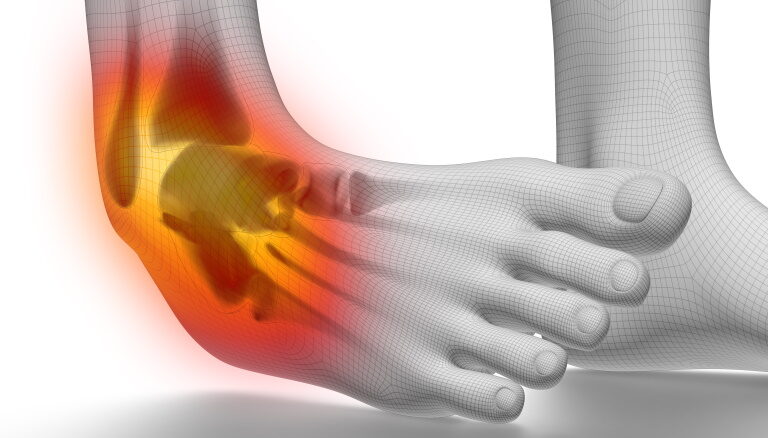Ankle ligament repair is a surgical procedure designed to address injuries to the ligaments that provide stability to the ankle joint. Ligament injuries can result from sprains, strains, tears, or chronic instability, often leading to pain, swelling, and compromised joint function. This procedure aims to restore proper ligament function, enhance ankle stability, and enable individuals to regain their mobility.

Understanding Ankle Ligament Injuries:
The ankle joint is supported by several ligaments that connect bones and provide stability during movement. Injuries to these ligaments can occur due to sudden trauma, repetitive stress, or athletic activities that involve rapid changes in direction. Commonly affected ligaments include the lateral ligaments (anterior talofibular, calcaneofibular, and posterior talofibular) and the deltoid ligament on the medial side of the ankle.

Surgical Approach:
Ankle ligament repair can involve different techniques depending on the severity and location of the injury. The procedure aims to either reattach the torn ligament ends or reconstruct the ligament using tissue grafts. The surgical approach can be open or arthroscopic, depending on the surgeon's preference and the specific case.
The Procedure:
The ankle ligament repair procedure typically involves the following steps:
Preparation: The patient is positioned under anesthesia, ensuring comfort during the procedure.
Incision: The surgeon makes incisions over the affected ligament or ligaments.
Ligament Repair: For minor tears, the surgeon sutures the torn ligament ends back together. In more severe cases or cases where ligament tissue is insufficient, a graft from the patient's own body or a donor is used to reconstruct the ligament.
Closure: After repair or reconstruction, the incisions are closed, and the ankle is stabilized with a cast, brace, or bandages.
Recovery and Rehabilitation: (Follow Dr. Fahad Protocol)
Following surgery, a period of immobilization is essential for ligament healing. After the initial healing phase, physical therapy plays a crucial role in regaining strength, flexibility, and coordination. The rehabilitation plan is tailored to the patient's specific condition and progress, gradually introducing weight-bearing and functional activities.
Benefits and Long-Term Outcome:
Ankle ligament repair aims to alleviate pain, restore joint stability, and enable patients to resume their daily activities, sports, and hobbies. Successful surgery can significantly reduce the risk of recurrent sprains and chronic instability, which can lead to further complications.
Preventing Future Injuries:
Proper warm-up, appropriate footwear, and exercises that focus on ankle strength and stability can help reduce the risk of future ankle ligament injuries.
In conclusion, ankle ligament repair is a surgical solution for addressing ligament injuries that compromise ankle stability and function. By repairing or reconstructing the damaged ligaments, this procedure aims to restore joint stability, alleviate pain, and improve overall ankle mobility. If you're considering ankle ligament repair, consultDr. Fahad to determine the most suitable treatment plan for your specific condition.


